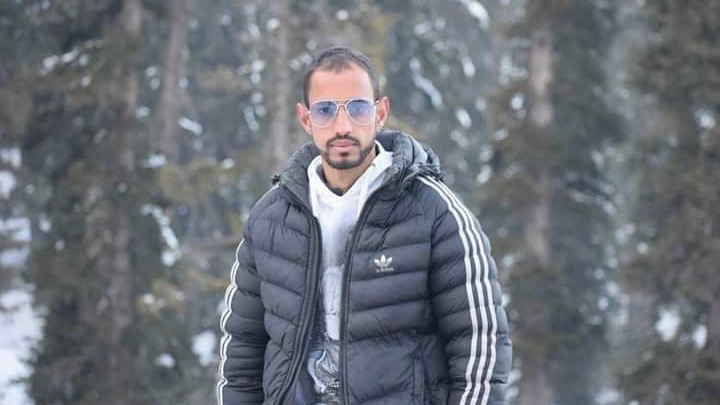Protests have swept across central Kashmir after security forces killed a 25-year-old civilian on May 13, Wednesday, for allegedly not stopping at a mobile checkpoint. However, eyewitnesses to the incident, along with family members of the deceased, have rejected the police’s claim and accused the state forces of “cold blooded murder”. Security forces responded to the protests by firing tear gas canisters and pellet gun shells, injuring several people. Clashes and incidents of stone-throwing were also reported at some places.
The civilian, identified as Mehraj ud din Peer, was reportedly apprehended by members of the paramilitary stationed at Kawoosa Khalisa village. Eyewitness G H Shah, who was traveling in the car with Peer, said “I disclosed my identity at the first checkpoint and that we are not fleeing. A policeman allowed us to pass at the first checkpoint and gestured towards a CRPF (Central Reserve Police Force) man on the second point who pointed a gun at us. We stopped the car and he opened fire. He opened fire when the car was stationary. ”
The CRPF, in its statement, claimed that Peer jumped two checkpoints before he was gunned down. The stationed personnel allegedly feared sabotage as a military convoy was passing by at that time. However, the eyewitness, Shah, testified, “If we would have been escaping from the spot, bullets shot at him would have pierced the car from behind, not in the front side. I myself fought with the CRPF man who fired.”
Peer was rushed in a critical condition to the SMHS hospital, but was declared dead on arrival.
This is not the first instance of the security forces opening fire on civilians for allegedly trespassing checkpoints. In November 2014, the army’s 53 RR unit opened indiscriminate fire at four young men traveling in a car. Two of them, Faisal Yusuf Bhat and Mehraj ud din Dar, died on the spot. The incident was condemned widely by human rights organizations, prompting the army to release an apology and order an inquiry. However, no security personnel were prosecuted for the killings due to the Armed Forces Special Powers Acts (AFSPA) that provides immunity to soldiers from any legal prosecution unless sanctioned by the government.
As per Kashmiri human rights defender Khurram Parvez, the police in Budgam’s Nasrullahpora recently tortured many civilians and destroyed their property. “And now armed forces personnel have shot dead a civilian for allegedly not stopping at a checkpoint,” he said. The activist notes that the cycle of violence in Kashmir remains the same. Whenever there is a civilian killing by state forces, the authorities impose restrictions in that area and shut down the internet. If people take to the streets protesting these killings, the state apparatus fires tear gas, pellets and bullets to stop the funerals, maiming and injuring many others. Such has been the modus-operandi of the authorities ”to criminalize the victim in their official versions” he said.
“Civil administration announces the probe”, each time registering the first information report, followed by “No investigation. No prosecution. And then, when there is another killing of a civilian, previous cases are forgotten, and the cycle starts again,” he added. On the other hand, whenever there are protests in the region over any killings, the police file cases against civilian protesters and go on to make several arrests.
Civilian casualties
On May 6, 32 year-old salesman from Pulwama’s Uthmula village, Jahangir Yusuf, was killed and dozens more were critically injured in a series of protests that followed the killing of top militant commander Riyaz Naikoo by counter insurgency forces. Medical superintendent of the district hospital in Pulwama, Mushtaq Ahmad Mir, confirmed that 12 out of 16 injured brought to the hospitals had sustained pellet injuries to their eyes and four had critical gunshot injuries.
Before taking up arms against Indian rule, 35-years-old Naikoo was a mathematics teacher at a private school. He rose to prominence in 2017 after taking charge of the Hizbul Mujahideen militant outfit as its commander-in-chief. His death during an intense military operation brought the Kashmir valley to the halt. Protests particularly swept the entire Beighpora village area of southern Pulwama district.
20 families were affected in the military operation, in which four houses were razed to the ground. Amid the COVID-19 restrictions, intense curfew was imposed for three subsequent days. The internet, which is now functional in Kashmir at slow 2G speeds, was shut down and entire mobile communication services were snapped. 2G internet services were restored in some parts of the State on May 12.
In another incident on May 5, teenager Hazim Shafi Bhat was killed in the crossfire in north Kashmir’s Handwara while he was spraying fertilizers in an apple orchard. Reports mentioned Hazim being caught in the crossfire after militants attacked and killed three CRPF personnel in Qazipora area of Handwara, in Kupwara district, around 70 km from Srinagar.
Since the abrogation of Kashmir’s special status in August 2019, the political situation continues to remain tense with an atmosphere of uncertainty, fear and intimidation. A significant number of political prisoners also languish in different prisons. The erstwhile Jammu and Kashmir State has now been bifurcated into two union territories.
On May 12, the Indian supreme court refused to order the restoration of 4G internet services in the region. The court’s order invoked widespread criticism from doctors’ bodies, activists and civil society, who have stressed that without the presence of high-speed internet, operating within hospitals to tackle the COVID-19 emergency is difficult. The virus has so far killed 10 people and infected nearly 950 in the region.





